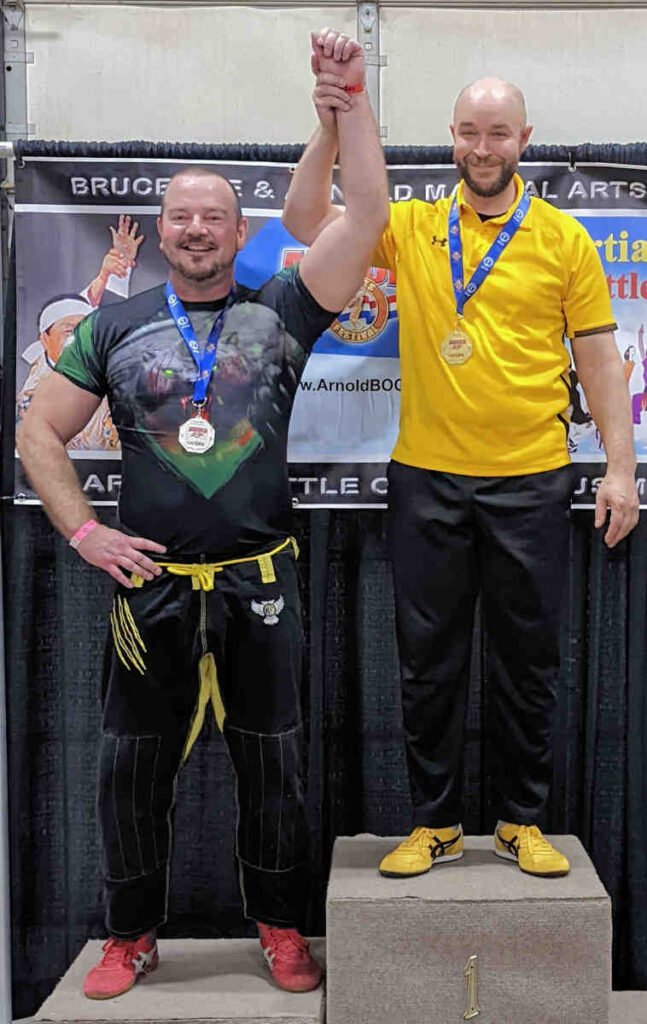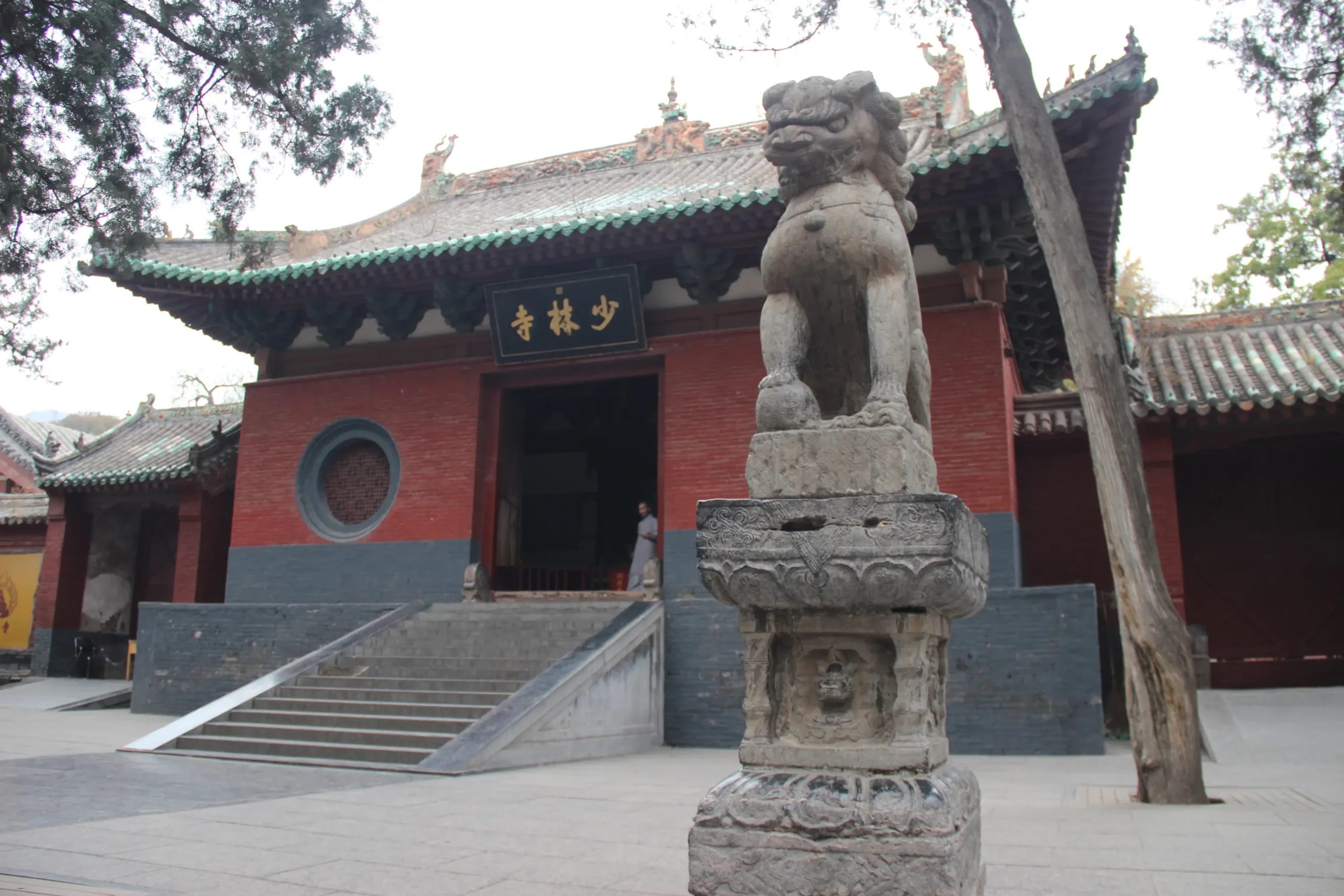From the January 2024 edition of our Tai Chi newsletter.
I recently gave an 45-minute interview to Daoist Arts Organization International. We started the conversation with a simple question: “How did you get started in Tai Chi?”
I intended to give a ten minute answer, and then move on to other topics. Instead I spoke nonstop for over an hour, and barely covered half of the story. Never mentioned my duel at Shaolin Temple; my personal interactions with Chuck Norris and Jackie Chan; my career as a semi-famous and demi-hated martial arts journalist; searching for black bears with Chen Zhenglei in the Canadian wilderness; and various other episodes of interest.
Upon realizing that seventy minutes had passed, and we were still only midway through the first question, I decided to stop talking. We had no time left for the topic I originally wished to discuss. That is, the real story behind my series of Tai Chi competition videos.
I released these videos through 2022 and 2023. I chose to minimize editing, narrative framing, and commentary. I just wanted to share the footage, as a documentary record of events.
We in the Tai Chi community need to produce such artifacts. Otherwise, the future history of the art will match its heavily redacted past. Which is to say, an irregular sequence of legendary feats, many of which likely never happened; and yet are endlessly retold by the acolytes of the masters who likely weren’t there.
Tai Chi cannot survive for another generation, if it remains shrouded in fairy tales. We need to stand firmly on the truth of what it was, and is.
So I figured at the time. Soon however I would be taught a new lesson.
Without a packaged narrative for these events, certain viewers started writing new fairy tales around them, spreading these tales around the Internet, and perversely citing my videos as their proof!
One way or another, the public demands a story. So let me now share the true story of what happened behind the camera…
One 吃亏
In a previous essay, I discussed the circumstances behind our first trip to the International Chinese Martial Arts Championship in Las Vegas. Group Tai Chi classes were illegal in Seattle at the time, effective indefinitely. This tournament was our first opportunity to interact with the broader Tai Chi community, in over a year.
On the evening before the competition, my traveling companions and I went on a long hike through Vegas. To and from, up and down the strip. This was my first time in the city, and I wanted to see all the sights. Paris, Luxor, the fountains at the Bellagio. I did see them, and they were amazing. But I should have spent more time looking at the ground.
I misjudged a high curb on Flamingo Road. Landed badly on my foot, and triggered a lower back spasm. This was the reawakening of a disabling injury from years earlier, at the worst possible time.
Despite now being unable to stand or walk properly, I resolved to move forward.
I would participate in every competitive division for which I had registered: traditional hand form, fixed and restricted step push hands. (Moving step and striking divisions were not offered here.)
As the video shows, I tried executing my solo form at one-quarter of the normal speed. This was my attempt to make the best of circumstances. It was the only speed at which I could move without significant pain. The judges did not enjoy my unorthodox performance.
Scoring the solo forms of other styles and lineages is a dreary task, even when they are performed at normal speed; much less at a snail’s pace.
As for the push hands competitions, they were similarly a disaster. My very first match was against a younger, shorter, heavier, eight-year veteran of the fixed-step division. I was glad for it to end quickly.
Two 吃苦
Our second major competition would take place a few months later, at the Arnold Sports Festival in Columbus, Ohio. The Arnold was the largest athletic event in the world, with greater attendance than the Olympics. The field would likely be wider and stronger than in Las Vegas. Hopefully the curbs would be shorter.
Knowing better now what to expect at a world-class tournament, I adjusted my daily training routine in preparation.
Forearm rotations are one of the old secret Taiji training methods. A strong and agile grip is essential for the skilled use of a sword and saber, and for martial arts in general. Nothing much can be done without a stable wrist.
These exercises can be performed with a club, or a stone lock, or a long pole, or other tools. Some use a short stick or a ruler. I myself chose a sledgehammer.
One fateful evening, I was performing this rotation exercise, and I went a little too far. Attempted one too many reps. My grip failed, the sledge hammer slipped through my fingers, and fell directly onto my bare foot.
This was just ten days before the Arnold.
My big toe was so dark and swollen, I wondered if it might fall off.
History does not repeat itself, but it does rhyme.
In the fifth century CE, Zen master Bodhidharma traveled across central Asia. The exact date is unknown. Different versions of his story circulate around today. Most however agree on these points. Bodhidharma traveled all the way to the Shaolin Temple. He met the local practitioners. And he was not at all impressed.
Rather than live amongst them, Bodhidharma decided to climb the nearest mountain. There he found a small cave. He sat down in it and stared at the wall.
For nine years.
He was up to something. Call it meditation if you want. But it’s also clear that he was waiting for the local village residents to grow up a bit.
Eventually, the scholar Huike made the hourlong hike up to Bodhidharma’s mountain lair, and asked him for instruction.
Bodhidharma, or Damo for short, replied honestly. You and your pals are not qualified to learn.
Not qualified?
Huike cut off his own arm, and presented it to Damo.
With that action, he became qualified.
Huike later inherited the leadership of Chinese Zen, as the story goes.
Fast forward by fifteen hundred years or so. In September 2002, I sat quietly in Damo’s cave, on that same mountain, one hour upwards of Shaolin.
They won’t let you sit there for nine years any more. There is a now a cave gate and a cave attendant. Seriously. But the attendant goes home at sundown, and I snuck up afterwards, and put in at least nine good hours.
In 2022, I still clearly remembered the penetrating cold of that mountain cave, and the story surrounding it. And I figured, if Huike can reach the pinnacle of enlightenment with just one arm, I can surely play a Tai Chi match with nine toes.
So we went to Ohio.
This is how one becomes qualified.

Three 卧薪尝胆
In 2022 the International Chinese Martial Arts Championship moved exclusively to Florida. My companions and I followed it there. Let me avoid repeating the protracted narration from my last DAOI interview, and get right to the point.
I suffered an abdominal muscle tear in my first match.
This injury was the worst of all three. One cannot avoid the pain of torn abs by moving slowly and carefully, or by sitting or lying down. Every breath is a knife.
Everyone has their limit.
You can see me briefly in some of those Florida videos, sitting ringside, like a stone statue. Trying to breathe as slightly as possible.
I was forced to withdraw from that tournament. No other choice. The only choice I had, was whether or not to return the next year…
Which I did.
In 2023, Shoreline Tai Chi won all six push hands divisions at the International Chinese Martial Arts Championship. Fixed, restricted and moving step. Men and women. All of them.
Coda 立如枰凖
I am telling you this because it actually happened, whereas other popular versions of this saga did not.
More importantly, because the true story of Taijiquan, so far as I am concerned, is the story of a few people who refused to quit.
It is not a story of people who attended a seminar and felt more relaxed afterwards. Or who felt a tingle in their palm and mistook it for a great spiritual achievement. Not of those who sold a lot of DVDs, or who made the grandest promises.
Such people are welcome to join in and participate, to thrive and to share the benefits of Taiji… but it’s not their story.
When it comes to the actual history of Tai Chi, only half of it has yet been shared effectively in public. Much of the truth has simply been outrun, by the self-promotional efforts of a few Tai Chi businessmen, who have rewritten it more to their benefit and liking.
I can see more clearly than ever now, through my own experience of both telling and not telling, what happens as a result.
I am the sixth generation of Taijiquan because of the five who never quit.
I intend to share the other half of the story, and make it stick.
